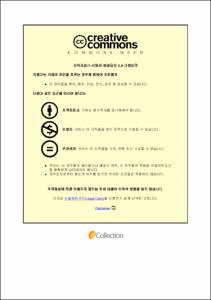전기자동차용 리튬이온전지 양극활물질 (LiNiMnCoO2)로부터 탄산리튬 및 유가금속 회수에 관한 연구
- Abstract
- This study is about the recovery of carbon lithium and valuable material (Ni, Mn, Co) from the lithium-ion battery cathode active material for electric vehicles NCM (LiNiMnCoO2) and investigated the conditions of recovery of carbon lithium (Li2CO3) and valuable material by thermal reactions in lithium and valuable material in cathode active materia.
To check the thermal behavior of NCM-type cathode active materia, a TGA (thermigravimetric analysis) analysis device was used and CO2 gas was supplied to simulate actual thermal reactions in an anode. cathode active materia was observed to vary in weight between 650 and 800°C, and it is believed that the increase in weight change was due to the super separation of carbon lithium and metal oxide CoO, MnO and NiO. Based on these results, Carbonation experiment was conducted in the temperature zone between 600 and 900°C, water penetration test for separating carbon lithium, and reduction heat treatment test for improving recovery rate of metal powder is as follows.
1. Carbonation test was conducted for phase separation from Li2CO3 and NiO, CoO, and MnO from NCM system acathode active material and confirmed that Li2CO3 and metal oxide NiO, MnO, and CoO are completely separated at 800 to 900°C. The temperature was maintained at 800°C for 2 hours and 2 hours.
2. To selectively recover carbon lithium from the electrolyte powder separated by Carbonation, water penetration was performed using the difference in solubility between carbon lithium and metal oxide. When the ratio of powder and distilled water was between 1:30 and 5 hours, the largest amount of carbon lithium was withdrawn and carbon lithium was recovered. In order to determine the amount of leachate Li from raw materials, the wet analysis method, Integrated Plasma (ICP), was used and approximately 89% lithium was recovered through water penetration.
3. The Monde process was used to selectively recover Ni from the remaining mixture (NiO, CoO, and MnO) after a water leak. Phase I of the process is a reduction phase, and hydrogen (H2) was supplied in the temperature zone (about 200°C) where only NiO can be reduced during the mixing powder. Stage II is the production of nickel carbonyl (Ni(CO)4(g)) so that the reduced Ni is easily separated from the mixture, and nickel carbonyl was produced by supplying CO gas to the mixture maintained at 80°C. Phase III was the final step in the selective recovery of Ni powder and (Ni(CO)4(g) was heat-dissolved at 180°C to obtain high purity Ni. The purity of the Ni powder recovered through the Mond process is approximately 97.99% and is sufficiently reusable for industrial use.
- Issued Date
- 2019
- Awarded Date
- 2019. 2
- Type
- Dissertation
- Publisher
- 부경대학교
- Affiliation
- 부경대학교 대학원
- Department
- 대학원 금속공학과
- Advisor
- 왕제필
- Table Of Contents
- 제1장 연구 배경 및 필요성 1
제2장 이론적 배경 5
2.1 전기자동차 개요 5
2.2 이차전지의 개요 9
2.2.1 전지의 종류 9
2.2.2 이차전지 개요 및 원리 12
2.2.3 리튬이차전지 세계시장 동향 17
2.2.4 리튬이차전지 용도별 시장 동향 20
2.2.4.1 IT기기용 리튬이차전지 세계시장 전망 22
2.2.4.2 전기자동차용 리튬이차전지 세계시장 전망 24
2.2.4.3 에너지저장장치용 리튬이차전지 세계시장 전망 26
2.2.5 리튬이차전지의 구성 28
2.3 리튬이차전지의 양극활물질 30
2.3.1 리튬이차전지의 양극활물질의 종류 및 특성 30
2.3.1.1 Li2CoO2의 특징 32
2.3.1.2 Li(NixCoyMnz)O2의 특징 34
2.3.1.3 LiNiO2의 특징 36
2.3.1.4 LiMn2O4의 특징 38
2.3.1.5 LiFePO4의 특징 39
2.4 리튬이차전지의 회수 및 재생기술 동향 40
2.4.1 물리적 공정 43
2.4.1.1 기계적 분리 공정 45
2.4.1.2 열처리 공정 45
2.4.1.3 기계화학적 공정 45
2.4.1.4 용해 공정 46
2.4.2 화학적 공정 46
2.4.2.1 용해(Dossolving) 공정 48
2.4.2.2 산 용출 공정 48
2.4.2.3 생물적 용출 공정 48
2.4.2.4 용매 추출 공정 49
2.4.2.5 화학 침전 공정 49
2.4.2.6 전기화학 공정 49
2.4.3 리튬이차전지의 재활용 기술동향 50
2.4.4 리튬이차전지의 연구동향 54
2.4.5 리튬이차전지의 특허동향 57
제3장 실험재료 및 방법 63
3.1 실험재료 63
3.2 실험 방법 66
3.2.1 열중량분석 66
3.2.2 Carbonation(CO2열반응) 68
3.2.3 수침출 70
3.2.4 Ni 선택적 회수방법 73
3.2.4.1 Process1(H2환원) 73
3.2.4.2 Process2,3(CO열반응 및 Ni(CO4)(g) 분해 열반응) 74
제4장 실험결과 78
4.1 NCM로부터 탄산리튬 회수 78
4.1.1 열중량분석 실험결과 78
4.1.2 CO2열반응 실험결과 80
4.1.3 수침출 실험결과 82
4.1.4 분말상의 탄산리튬 회수 86
4.1.5 전체 공정에서의 리튬거동 87
4.1.6 Ni 선택적 회수 실험결과 88
제5장 결론 93
5.1 Carbonation(CO2열반응) 93
5.2 수침출 94
5.3 Ni 선택적 추출 94
참고문헌 95
- Degree
- Doctor
- Files in This Item:
-
-
Download
 전기자동차용 리튬이온전지 양극활물질 (LiNiMnCoO2)로부터 탄산리튬 및 유가금속 회수에 관한 연구.pdf
기타 데이터 / 2.72 MB / Adobe PDF
전기자동차용 리튬이온전지 양극활물질 (LiNiMnCoO2)로부터 탄산리튬 및 유가금속 회수에 관한 연구.pdf
기타 데이터 / 2.72 MB / Adobe PDF
-
Items in Repository are protected by copyright, with all rights reserved, unless otherwise indicated.